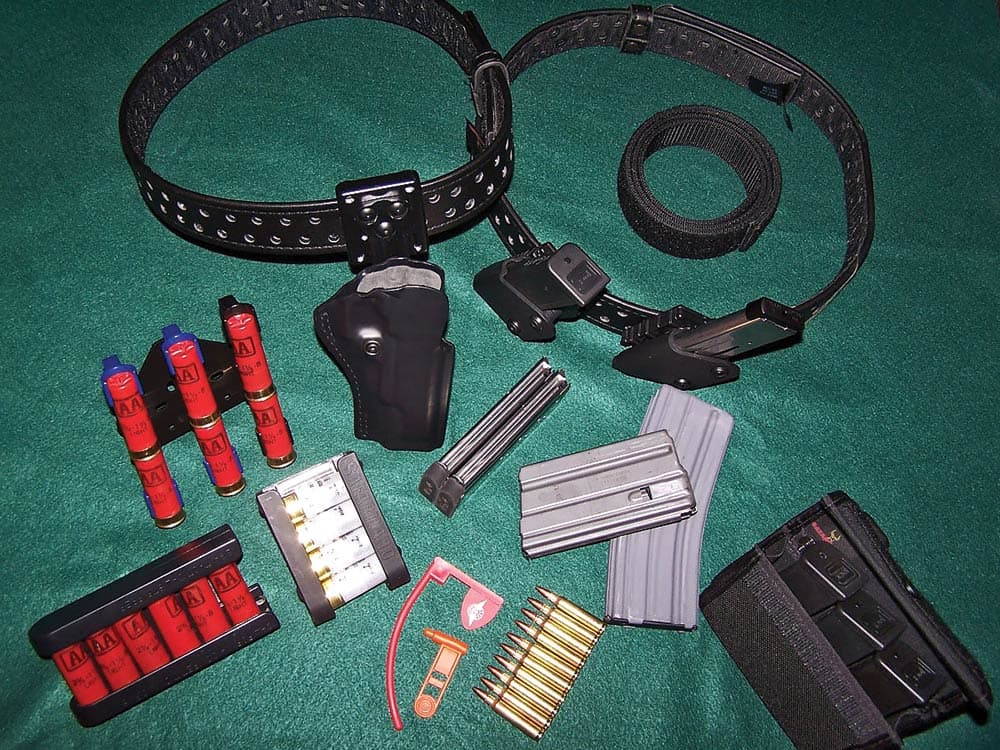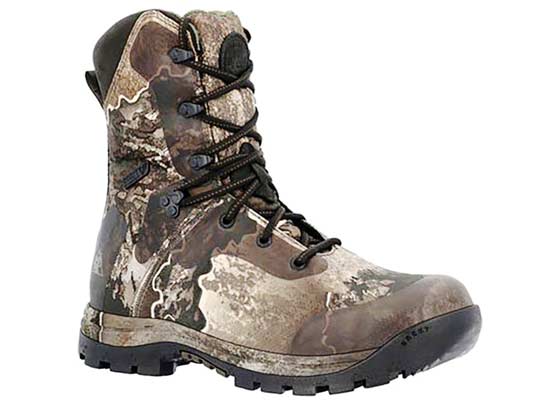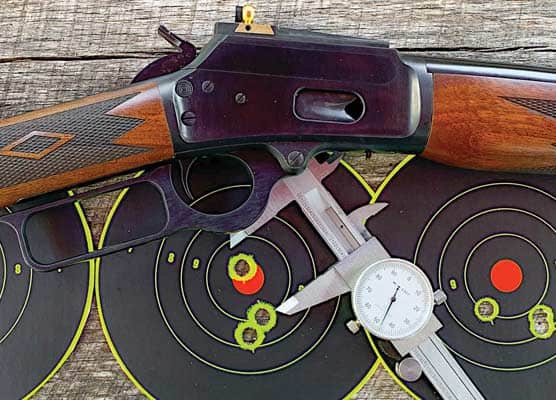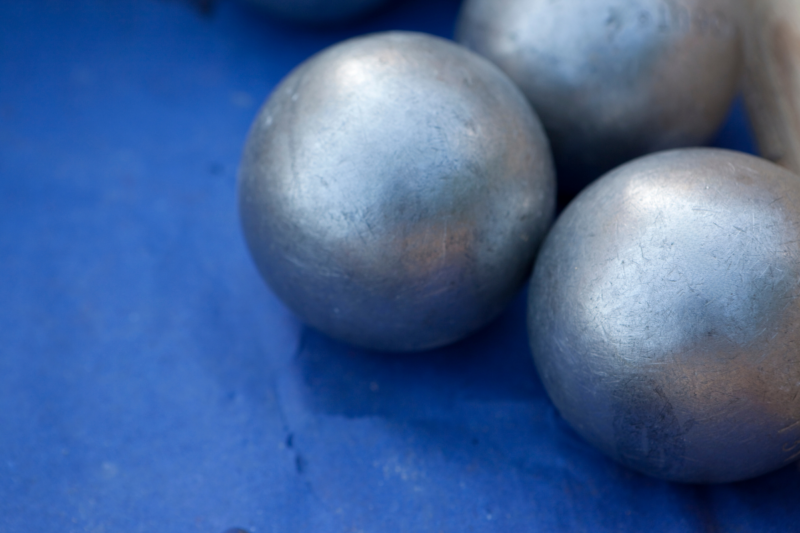Dissecting The 3-Gun Game & Equipment Part 3
The Shotgun
Pro shooter Tes Salb loads her Browning A5 while negotiating a shotgun stage.
Since I’ve been a lifelong clay target shooter, you’d think the shotgun stage of 3-Gun would be my favorite. But this type of shotgun shooting is not even remotely close to what I grew up with.
For starters, the shotguns used are dramatically different than those used for trap, skeet and sporting clays. In those types of traditional shotgun games you see a variety of guns in different gauges—over/unders, side by sides, single shots, pumps and semi-auto’s—many with beautiful custom wood and high-end engraving.
But in 3-Gun it’s all semi-auto—except for Heavy Metal, where it has to be a pump action. None of the guns have fancy walnut or engraving. Remember, this is a run-and-gun game. When you’re done with the gun, you throw it into a barrel. As in the other stages, the shotgun event is about speed—how fast you can load and acquire the next target.
A good, reliable semi-auto is the only gun used, but the same principles apply when looking for a shotgun to use in 3-Gun as in the other games. That would be good fit, a smooth action, how easy and fast the gun can be loaded and most importantly—how well it points. And it’s mostly a 12-gauge deal. You can go smaller, but you’ll be at a definite disadvantage.
Recoil-operated and gas-operated are the two main actions. Each come with their own pros and cons. Recoil-operated shotguns are the most reliable—a huge advantage in 3-Gun. Malfunctions cost time and points. The downside is they have more of a kick and tend to cycle slower than gas guns… at least the older long-recoil guns do. Gas-operated actions have less kick and muzzle rise, allowing you to acquire subsequent targets faster. But the chance of a malfunction is higher—usually a product of “load sensitivity” and neglecting to keep the gas system clean and free of carbon buildup.
Tes and Shari both prefer the reliability of the recoil-operated A5 Stalker. Recoil may be stouter than a gas-operated gun, but neither shooter found it objectionable.
I’m probably going to take heat for this next statement, but the cycling rate of a semi-auto shotgun is not all that important when it comes to 3-Gun competition. If you’re fast enough to outrun and outshoot the cycling rate of your shotgun, you don’t belong in 3-Gun. You belong in the Olympics.
There are a lot of brand options in 3-Gun. Benelli, Mossberg, Browning and a few more manufacturers are all making semi-auto’s specifically geared for the game. Knowing I was giving up recoil for reliability, I tried a number of inertia-driven guns and borrowed a Browning A5 Stalker with a 26-inch barrel from another shooter.
When I first shot the gun, I was prepared for a heavier kick and more muzzle rise and was surprised when I didn’t get it. The felt recoil was minimal. So, I checked my ammunition. We all know a shotshell’s payload and powder charge plays an important part in recoil, and I was sure I was shooting a light load—not what I wanted to shoot in competition. But that wasn’t the case. Plus, the gun wasn’t all that heavy, which again surprised me because I expected more recoil from a relatively lightweight gun.
I’m a snobbish shotgun shooter and I believe a gun needs to be custom fitted, so I checked with the owner of the gun and was even more surprised when I was told it was stock—no modifications had been done except to open up the mag well and add an extended magazine.
But the A5 Stalker moved and pointed as if it were custom. When I shot 1-1/8-ounce, 3 dram 7-1/2 loads, my perception of felt recoil was minimal. I was able to get on target quickly and accurately. Conventional shotgun shooting requires pointing, not aiming. But when running and gunning—and not being able to take the time ensure a good mount—point of aim is a critical factor. For me, the Browning A5 Stalker was ideal.
There is much more information on the 3-Gun game than I’ve been able to give in this 3-part series. To cover it all would take up an entire issue. It’s a complicated game and an addictive one.
But if you love to tinker with guns and gear, this is the game for you.
Bare-bones must-haves include belt, magazine carriers, extra pistol and rifle magazines and your choice of shotgun shell caddies.
Browning’s A5 Stalker in dead-stock factory trim requires little in the way of modification, except for installing an extended magazine and opening up the magwell.
Absolute Necessities
Peripheral gear for 3-Gun is plentiful and you can spend a lot of money getting what you think you’ll need. You don’t really need all of it, but there are a few must-haves—not including the very basics, like eye and ear protection and, of course, the guns and ammunition.
Shooting Belt: Not only will your belt carry a fully loaded pistol, but it’ll be carrying a lot of extra magazines and extra shotgun shells, depending on the stage you’re on. So a sturdy belt capable of holding a lot of weight is vital. Comfort is key as well. While you’re negotiating the stages, wearing a belt that slips or doesn’t fit right is distracting. I tried a few different types before finding Safariland’s Equipment Locking System, which is the most popular. Featuring two rows of pre-cut holes running the full length of the belt—so the ELS Receiver Plates can be attached in different locations and angles—the belt was everything I needed. The Receiver Plates are used for attachment of the other accessories.
Holster: More than an accessory, a holster is mandatory and there are rules that must be adhered to. The holster must cover the triggerguard completely. This is for pure safety, so the gun doesn’t accidentally discharge during the draw or while being reholstered. Retention is another factor. You’ll be running pretty quickly through stages, kneeling down, standing up, moving in, out of, and around obstacles. So your pistol must be secure. If it falls out of the holster, you’ll be disqualified, but more importantly, it’s dangerous. The make and model of your gun will determine the holster used.
Pistol/Rifle Magazine Carriers: Most handguns come with two magazines, but you’ll want a lot more for this game. Four or five more are needed and, believe me, you’ll use them. For the rifle, one or two extra will do. There are a number of polymer magazine carriers available. Most are designed for a specific magazine type.
Shotgun Caddie: This is a vital accessory and you’ll probably need more than one. The shotgun stages are all about speed, not just in the actual shooting but in the loading as well. Which caddie you use depends on the loading technique you’re most comfortable with. The most popular technique is dual loading—when you grab two shells that are stacked vertically and load them into your gun in one smooth move. The faster you load, the faster you can shoot. No matter which type of caddie you choose, speed only comes with practice. I spent many an evening practicing loading with dummy rounds.
Baggage Cart: Competing on the USA Shooting World Cup team gave me the opportunity to see the other shooting sports. The rifle event was always interesting. But what really fascinated me were the “little red wagons” the rifle competitors used. Yes, Olympic rifle shooters have so much gear the use baggage carts to haul it all around. So it is with the game of 3-Gun. Since each stage typically requires the use of all three guns, leaving equipment/ammunition back in the car and going back and forth to get it is not an option. You have two choices for carrying equipment. A backpack-style range bag long enough to carry both long guns and most of your gear is one option. But lugging around 40 pounds of guns and ammunition on my back all day does not enhance my shooting. There are several different types of carts, so it’s basically personal preference. Those Olympic rifle shooters knew what they were doing.
When it comes to accessories, take your time. You can spend a lot of money on stuff you won’t need once you fully understand the game… and it’s money you could have spent on more important things—like ammunition.
strong>A5 Stalker
Maker: Browning
One Browning Place
Morgan, UT, 84050
(801) 876-2711
https://www.brownells.com/
Action: Short-recoil semi-auto
Gauge: 12
Capacity: 4
Chamber: 3 inches
Choke: F, M, IC tubes supplied
Barrel length: 26 inches
Overall length: 51-5/8 inches
Weight: 7 pounds, 7 ounces
Length of pull: 14-1/4 inches
Drop at comb: 1-3/4 inches
Drop at heel: 2 inches
Sights: Fiber-optic front on rib
Finish: Matte blue barrel, matte black receiver
Stock: Black synthetic (Dura-Touch armor coated)
Price: $1,629.99







